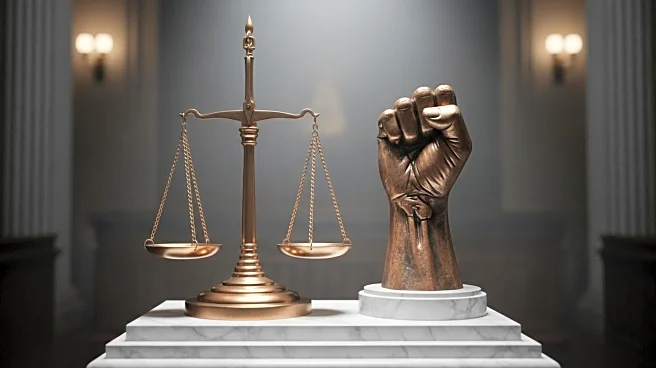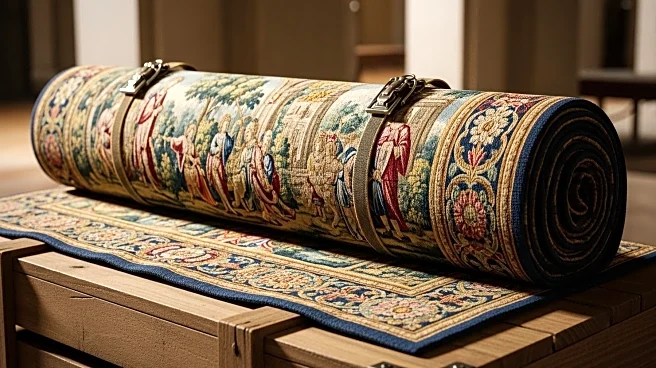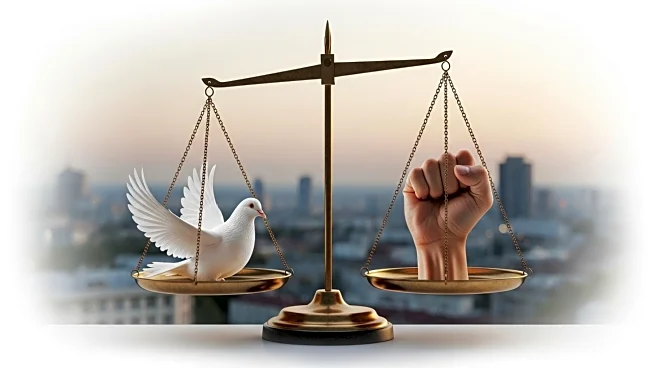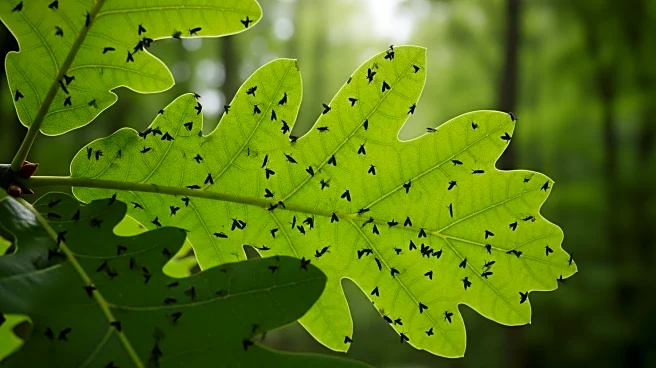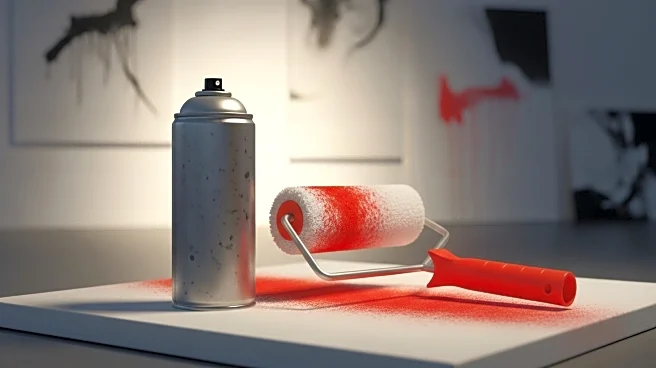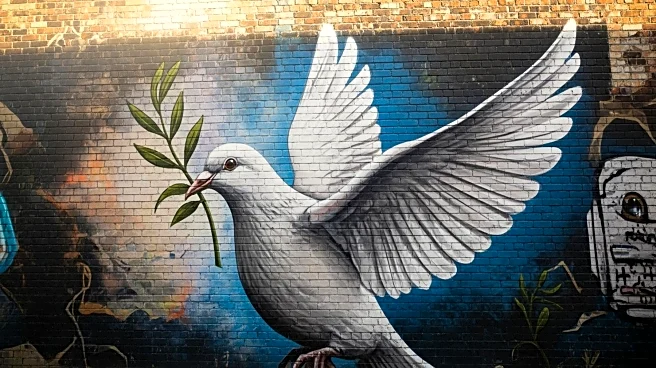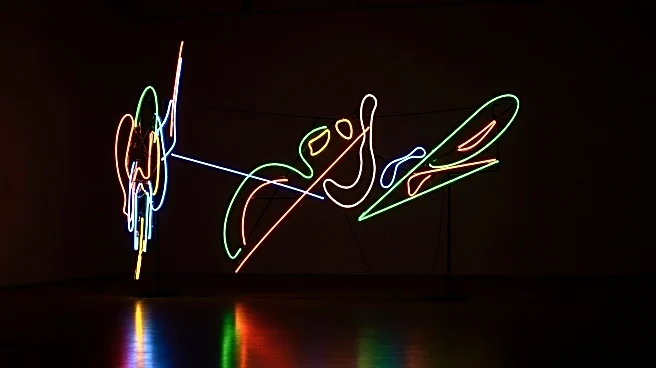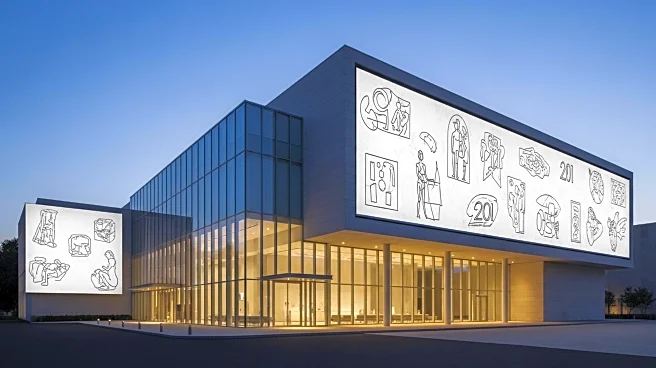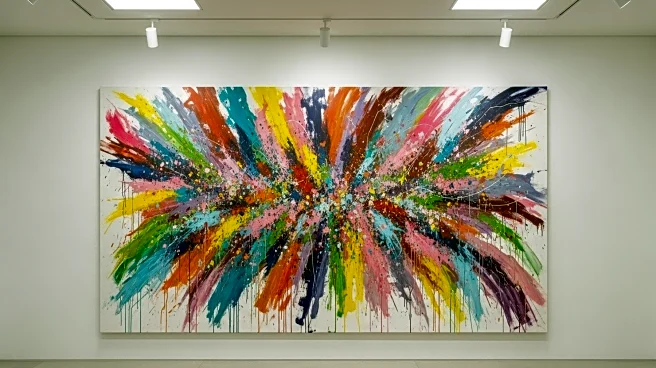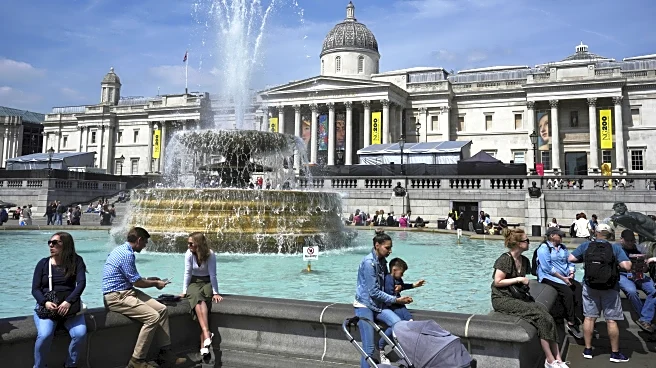What is the story about?
What's Happening?
A mural by the anonymous street artist Banksy, depicting a judge beating a protester with a gavel, is set to be removed from the Royal Courts of Justice in London. The mural, which appeared on the court's outer wall, has drawn significant attention, with crowds gathering to view it. The British court service decided to remove the artwork due to the historical significance of the building, which is a listed structure. The mural emerged following a protest in London where nearly 900 demonstrators were arrested for supporting Palestine Action, a group banned under anti-terrorism laws. The mural is seen by some as a symbol of state brutality against protestors.
Why It's Important?
The removal of the Banksy mural highlights ongoing tensions between artistic expression and governmental authority. Banksy's work often carries political messages, and this mural is perceived as a commentary on the suppression of protest and free speech. The decision to remove the mural underscores the challenges faced by artists in expressing dissenting views, particularly in historically significant locations. The incident also reflects broader debates about the role of art in political discourse and the limits of protest in democratic societies.
What's Next?
The removal of the mural may spark further discussions about the balance between preserving historical sites and allowing contemporary artistic expression. It could also lead to increased scrutiny of government actions against protest groups, particularly those advocating for controversial causes. The public's reaction to the removal and the ongoing dialogue about the mural's message may influence future policies regarding public art and protest rights.
Beyond the Headlines
The mural's removal raises questions about the intersection of art, politics, and public space. It challenges the notion of art as a tool for social change and the extent to which governments can control artistic narratives. The incident may prompt artists and activists to explore alternative methods of expression and protest.
AI Generated Content
Do you find this article useful?
